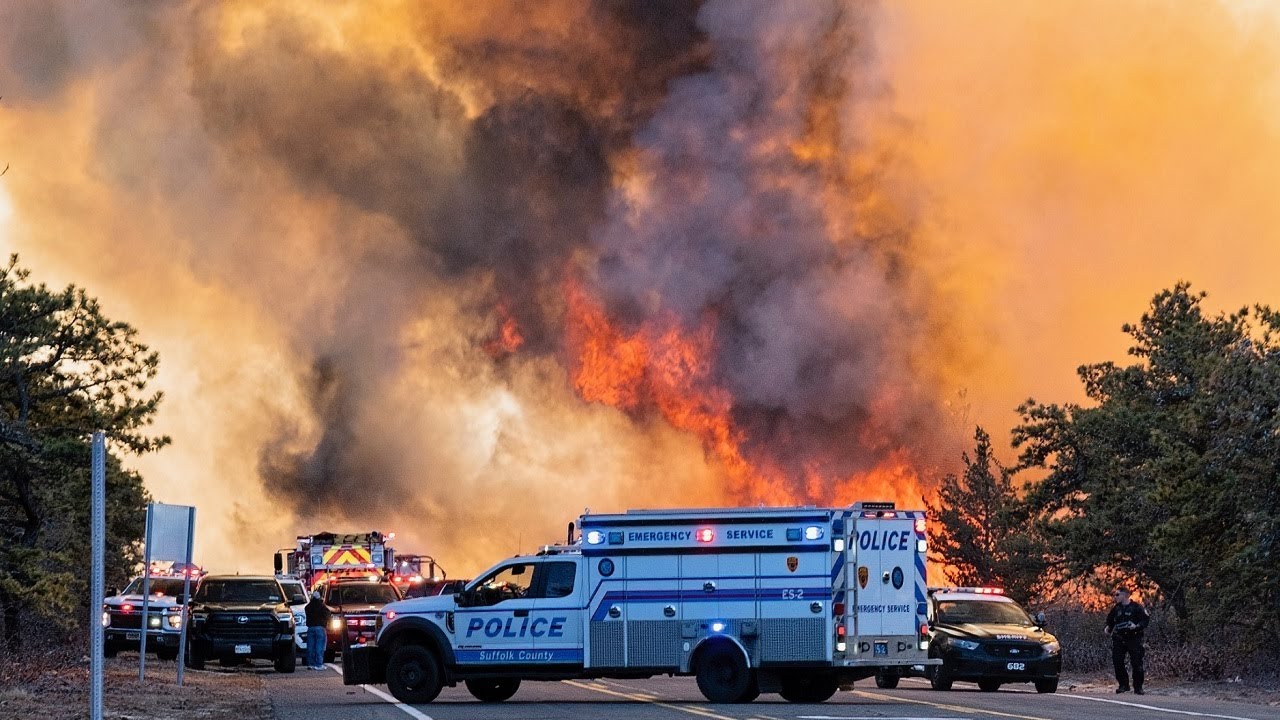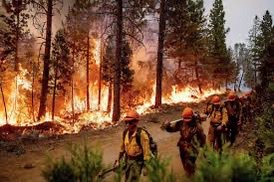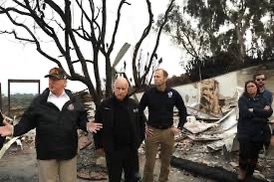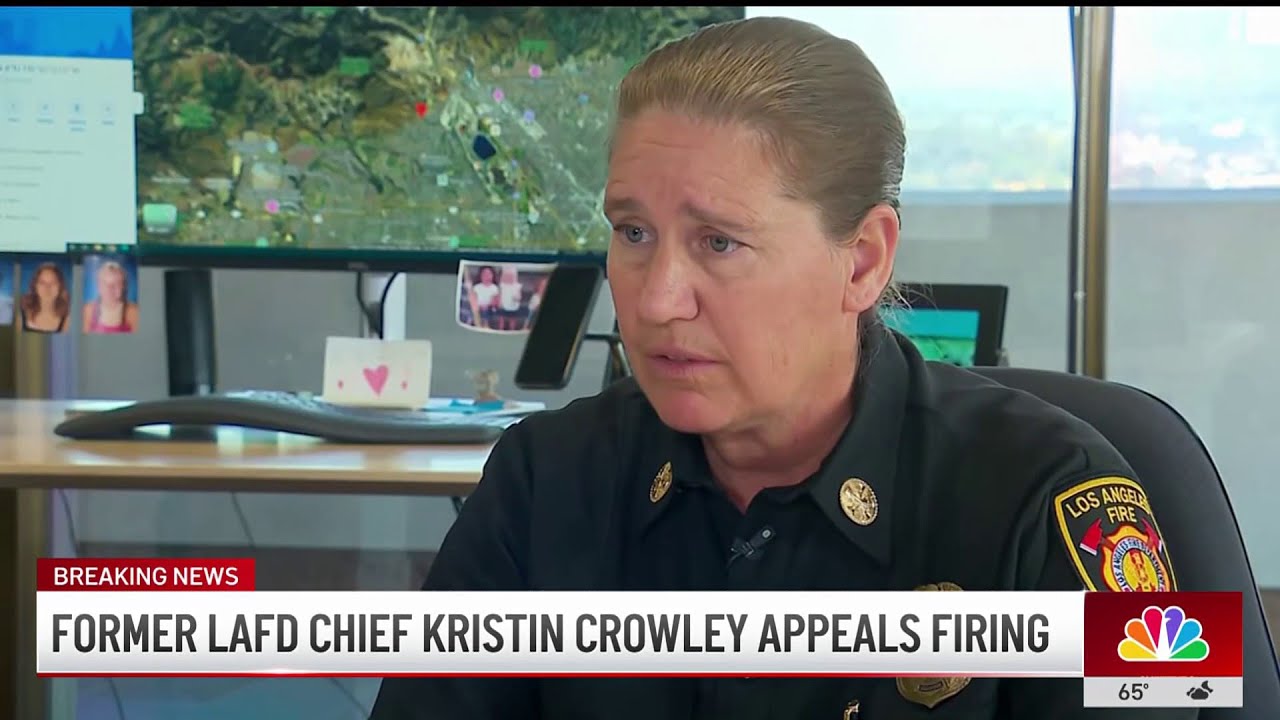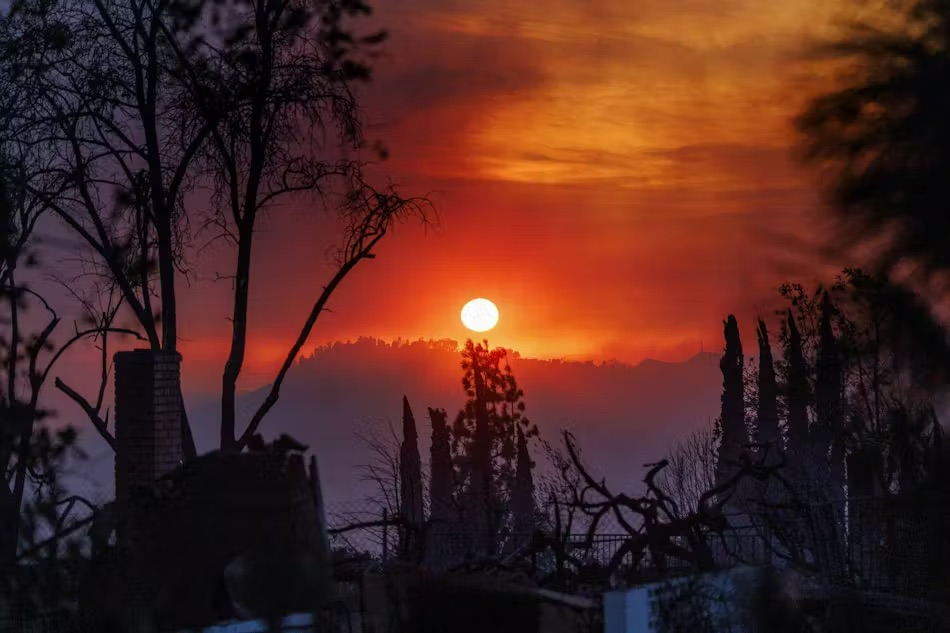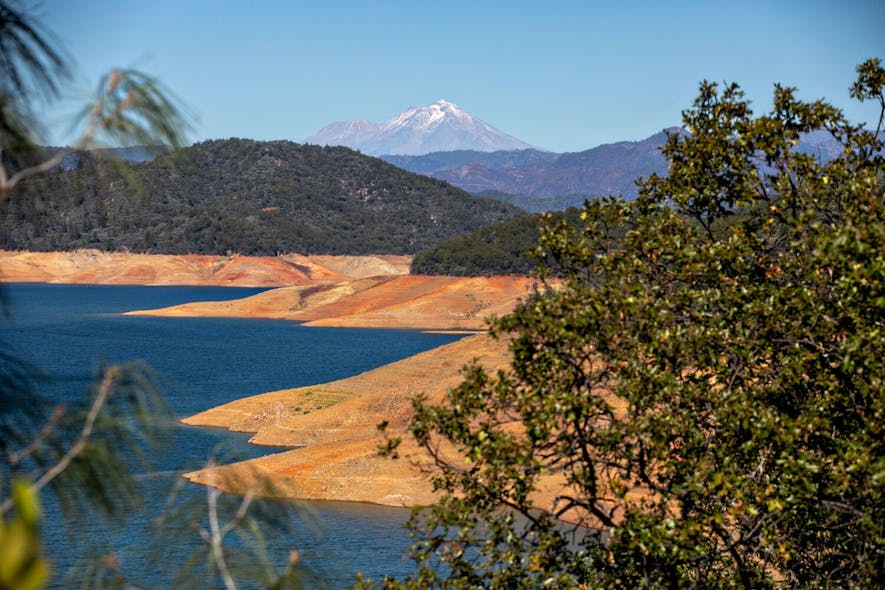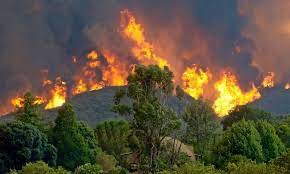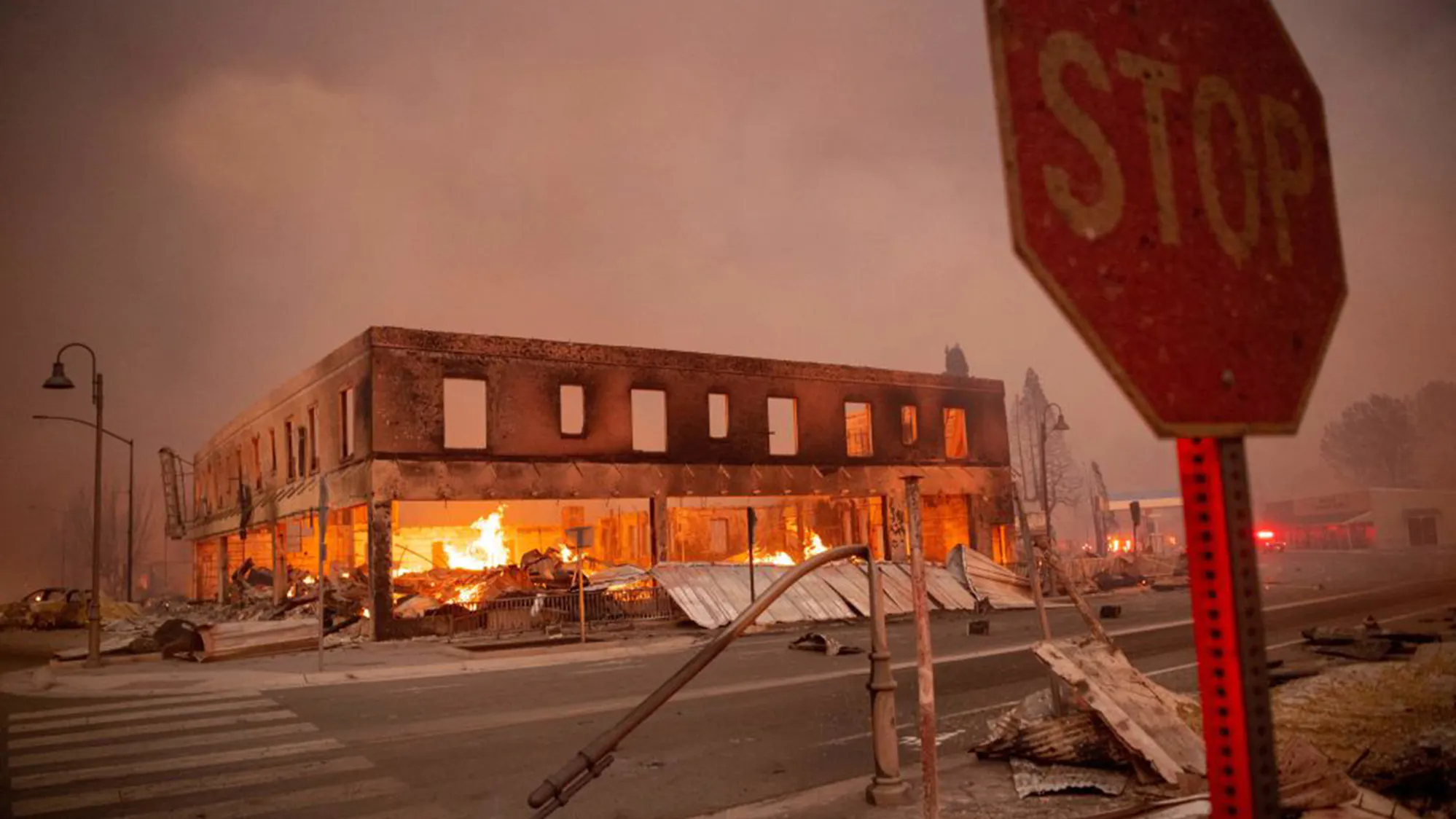As wildfires rage across Western states, COVID-19 cases and pandemic-related supply chain issues have made it harder to deploy firefighting resources.
September 17, 2021 – By Sophie Quinton – Source Stateline.org
As wildfires rage across Western states, flattening rural towns and forcing thousands of people to evacuate, coronavirus cases and pandemic-related supply chain problems have made it harder to deploy firefighting resources to where they’re needed, fire officials say.
More firefighters appear to be falling ill with COVID-19 and quarantining this year than last year, the officials say, because of the highly contagious delta variant and mixed adherence to COVID-19 safety measures such as masking, vaccinations and social distancing.
“Last year, I actually was incredibly, pleasantly surprised by how little COVID it seemed like we had,” said Melissa Baumann, president of the National Federation of Federal Employees’ Forest Service Council. Her union represents U.S. Forest Service employees, including wildland firefighters who work for the agency.
“I did not hear of whole [fire] crews going down, right and left,” she said. “I’m hearing that this year.”
In addition to the extra stress it puts on fire crews, the uptick in cases has alarmed some officials in Western states, who say fire-prone communities need all the help they can get to fend off dangerous blazes.
“On the fire line and in camps, COVID-19 not only threatens the health of firefighters but our ability to deploy critical firefighting resources to the fire lines,” wrote Washington state’s commissioner of public lands, Hilary Franz, to the U.S. secretaries of Agriculture and the Interior last month. “At a time when we need them the most, we cannot afford to have any get sick.”
Four or five wildland firefighters have died from complications of the virus this year, said Burk Minor, executive director of the Wildland Firefighter Foundation, a Boise, Idaho-based group that supports families of such firefighters killed in the line of duty. “I don’t recall any fatalities from COVID last year,” he said.
National fire leaders are collecting data on COVID-19 activity associated with large fires, and some government agencies are tracking when their employees get sick. But there’s no publicly available data on the total number of wildland firefighters nationwide who have fallen ill with COVID-19 or had to quarantine after exposure.
Deploying enough firefighters, support staff and equipment to protect communities was always going to be tough this year, even without the delta surge. Fire risk has been high and many federal firefighting crews are understaffed, particularly in California.
More than 5.5 million acres have burned nationwide so far in 2021, slightly below the nearly 6.1 million acres that had burned by this time last year, according to the National Interagency Fire Center, which coordinates nationwide firefighting efforts.
As fall approaches, blazes aren’t letting up. “It looks much like it would in August, in the worst years,” said Jim Karels, fire director with the National Association of State Foresters.
Fires have been so unrelenting that this year the United States could spend a record number of days under the national center’s two highest wildfire mobilization levels, Karels said, meaning most of the nation’s wildland firefighters, engines and other pieces of equipment are deployed.
COVID-19 has added to the pressure. There have been several recent instances in Washington state where positive cases affected firefighting efforts, said Sarah Ford, communications director for Franz’s agency, in an email to Stateline.
A federal crew headed to the Muckamuck fire recently had to turn back after crew members fell ill with the virus, Ford said. An air tanker at the Air Force base at Moses Lake had to be temporarily grounded after its crew tested positive, she said. And an entire leadership team battling the Walker Creek fire had to be replaced because of members testing positive.
In her letter, Franz asked the two cabinet secretaries to require their firefighters to be vaccinated and make COVID-19 vaccinations available at fire camps they manage.
Supply chain disruptions also have affected firefighting, Karels said. “It really started out with the impacts of logistics, of not enough truckers, of not enough people able to hire catering, supplies and fuel,” he said. Those problems have eased up somewhat as the year has gone on, he added.
Spokespeople for federal firefighting agencies say employee safety is a top priority. They say agencies are requiring social distancing, masking, hand-washing and other safety measures at work.
“We learned many lessons from the 2020 Fire Year about how to respond most effectively given the challenges brought on by the pandemic,” U.S. Forest Service spokesperson Babete Anderson wrote in an email to Stateline. “We have continued to employ those successful practices in our firefighting plans in 2021.”
The Democratic governors of Oregon and Washington have moved to require state employees, including firefighters, to be vaccinated for COVID-19. Other Democratic Western governors, such as California Gov. Gavin Newsom, require state employees to be vaccinated or regularly tested for infection.
Karels said firefighters may be falling ill after being exposed to COVID-19 elsewhere. “It’s been a tough summer when it comes to the delta variant and COVID across the country,” he said.
The pandemic ultimately hasn’t prevented fire crews from getting the job done, he noted. “We haven’t had an event where, because of COVID, we haven’t been able to fight a fire.”
Numbers detailing how many firefighters are ill or quarantined are hard to find.
The National Wildfire Coordinating Group, which sets national wildfire operations standards, says on its website and in memos that managers of large wildfire incidents must report COVID-19 activity to a tracking system.
Stanton Florea, a spokesperson for the National Interagency Fire Center, which fields questions about the coordinating group, said he wasn’t aware of any such tracking system. He referred Stateline to the Agriculture Department, which oversees the U.S. Forest Service, and to the Interior Department.
A small fraction of Forest Service fire personnel have contracted the virus, spokesperson Anderson said. As of Sept. 4, the latest data available, 421 had tested positive in 2021, and 497 tested positive last year, she said. The agency typically employs 14,500 firefighters.
The Interior Department, which usually has a staff of about 5,000 firefighters each year, declined to provide data on COVID-19 cases.
Regional fire officials and front-line firefighters told Stateline that they’re hearing more about COVID-19 cases this year than last. At least a dozen fire crews — or members of crews — in California have had to quarantine this year, said a California-based U.S. Forest Service fire and aviation leader who spoke to Stateline anonymously for fear of reprisal from their employer.
“I’ve heard of crews being stood down for upwards of two weeks at a time, and I’ve heard of crew members staying behind because they tested positive,” the official said. “It’s really all across the board.”
The National Wildfire Coordinating Group’s health committee issued recommendations last year for reducing the spread of COVID-19 among fire personnel. The recommendations included everything from preventing crews from commingling to conducting briefings remotely and distributing boxed meals at fire camps to promote social distancing.
Although those recommendations remain in place, as of this summer adherence has declined, according to a mid-July memo from the committee’s leader.
“Currently, reports from the field indicate very limited application of … infection control measures (e.g. mask wearing, hand hygiene, physical distancing … ) taking place on incidents among any personnel,” wrote L. Kaili McCray, chair of the medical and public health advisory team.
Both vaccinated and unvaccinated people should wear masks and keep their distance from one another, unless they’re actively engaged in fighting a fire, McCray advised. He declined to answer questions, referring Stateline to the National Interagency Fire Center’s communications team.
Firefighters, like everyone else, were ready for life to return to normal in the spring and early summer, when COVID-19 cases were dropping and vaccination rates were rising, the California-based Forest Service official said. “In general, we’ve dropped our guard a bit.”
The threat posed by the virus isn’t top of mind for most firefighters, the official said, because crews also face threats such as falling trees and extreme fire behavior on the job. “I would also say, as firefighters, and as managers of risk, on a day-to-day basis we have a higher tolerance for risk.”
Firefighters are subject to different COVID-19 vaccination and testing requirements depending on their employer.
U.S. Forest Service employees, for instance, must submit a form declaring their vaccination status and wear a mask on the job if they’re unvaccinated. Although unvaccinated federal employees are supposed to be tested regularly, the Agriculture Department doesn’t yet run a surveillance testing program.
Those requirements will change. A federal task force is now hashing out the details of Biden’s new vaccine mandate for federal agency employees and contractors.
Washington state, meanwhile, requires all state employees to get vaccinated by mid-October and to quarantine for 14 days after exposure to the virus. That’s a higher standard than the latest federal Centers for Disease Control and Prevention guidance, which says local public health officials can allow exposed people who test negative for the virus to end their quarantines after seven days, and says that fully vaccinated people should get tested, but do not need to quarantine unless they have symptoms.
There may still be a gap between official policies and what’s happening on the ground. Ben Elkind, a Forest Service smokejumper and a member of Grassroots Wildland Firefighters, an organization that advocates for federal wildland firefighters, said he hasn’t yet had time to fill out the vaccine attestation form. “Nobody’s talked to me about it at all, because I’ve been busy on fires,” he said.
“I haven’t even seen a computer for a month,” he added in a later conversation.
Recently assigned to the Bull Complex fire in Oregon, Elkind said he worked with people who’d been exposed to COVID-19, yet he couldn’t find an easy way to get tested on-site before heading home to his wife and two young kids. “I asked about testing, and there really wasn’t any way for me to get that done,” he said.
A public information officer for the Bull Complex fire said in an email to Stateline that there have been only three confirmed cases of COVID-19 among fire personnel assigned to that fire so far (there are currently 594 people working on the fire, according to incident information posted online).
Emergency test kits are available to firefighters, the officer said, though health facilities elsewhere offer the most accurate testing.
It’s not clear whether the latest state and federal vaccine mandates will go into effect early enough to reduce the spread of COVID-19 among firefighters this fire season.
Washington state’s October vaccination deadline, for instance, comes after the wildfire season typically ends there. Federal agencies should make sure their employees are fully vaccinated by Nov. 22, according to the latest guidance from the Biden administration’s COVID-19 safety task force.
Unions that represent wildland firefighters also want to be able to negotiate the details of the new policies.
CAL FIRE Local 2881, the union that represents employees of California’s state firefighting agency, has filed a complaint over Newsom’s July announcement that state workers be vaccinated or tested weekly for COVID-19.
“We are not pro-vaccine or anti-vaccine. We believe that that’s an individual choice, and as a union, we shouldn’t be involved in a personal decision,” said CalFire Local 2881 President Tim Edwards. He said the union filed the complaint because it wants to be able to negotiate changes to working conditions.
“We felt they did something without negotiating,” he said, “or even talking to the bargaining units or the unions.”
And some firefighters may refuse vaccines, although it’s hard to say how many.
Baumann said that internal surveys suggest that 70% of unionized Forest Service employees have been vaccinated. Although her unvaccinated members have been angry and vocal about having to follow additional safety protocols, she said, it’s important to remember that they’re in the minority.
“It appears that those who are anti-vaccination, and anti-testing, are very loud,” she said. “So we have to make sure we listen to those voices that aren’t being so loud.”
©2021 The Pew Charitable Trusts. Visit at stateline.org. Distributed by Tribune Content Agency, LLC.
